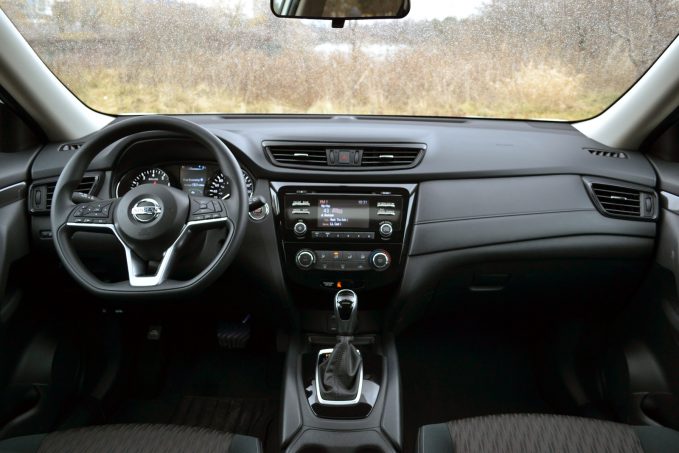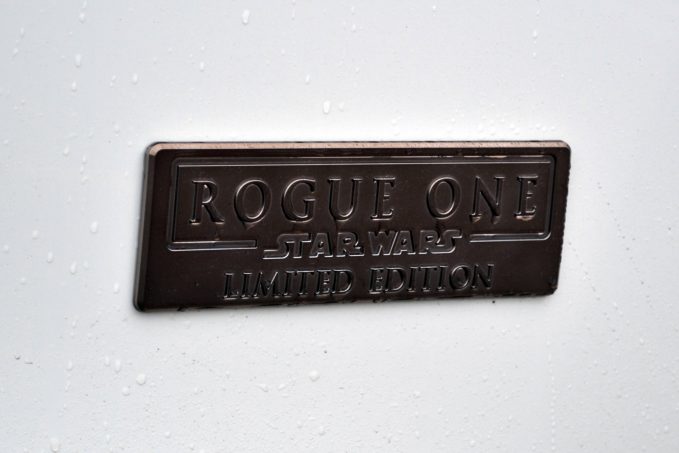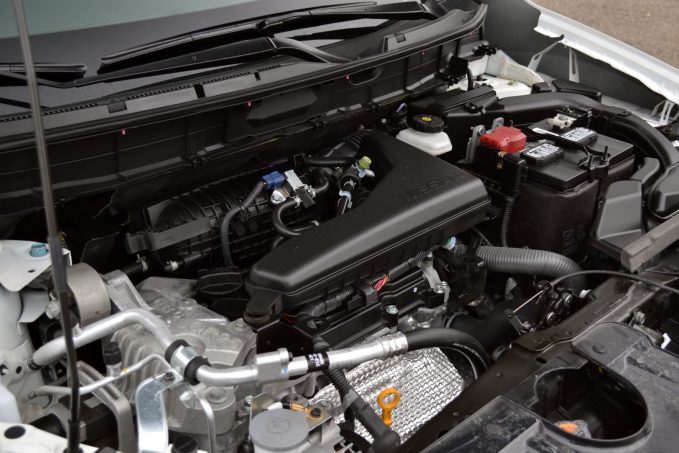There may not be a crossover making more headway these days than the Nissan Rogue.
It’s quietly gone from an afterthought to in demand, climbing the sales charts to crack the top-five best-selling CUVs on the market. That means the Rogue is rubbing fenders with the likes of the Honda CR-V and Ford Escape. But as overhauled versions of both of those segment staples hit dealer lots in recent months — and a new Mazda CX-5 on its way in the near future — the Rogue seems suddenly outdated.
Three years on the market in one of the most hotly contested segments has a way of doing that. New tech and features that were barely breaking through when the second-gen Rogue debuted back in 2014 have become commonplace today, leaving aging rides like the Rogue at a major disadvantage. Which is where this mid-cycle refresh comes in, bringing with it a fistful of features aimed at continuing the Rogue’s upward trend by matching the likes of the cutting-edge competition.
Slight Styling Tweaks
The Rogue has had its styling updated as part of this refresh, but you’d be forgiven if you didn’t notice at first or second glance. Slight tweaks outside include new bumpers front and rear, and some revised headlights flanking a new version of Nissan’s V-motion grille, but that’s about it. That’s not to say it isn’t a handsome package, and the Rogue looks even more like a baby Pathfinder than before, but Nissan definitely played it safe with the update.
Get the Flash Player to see this player.
The cabin has also been spruced up, however slightly, to include a new flat-bottom steering wheel, as well as a new center console design, a new shifter, and some updated trim panels on the doors and dash. The fabric used on the seats has also been replaced, while a fancy new trim package adds quilted leather upholstery to top-of-the-line SL models.
ALSO SEE: 2017 Honda CR-V Review
Our tester came finished in mid-grade SV trim, which leaves a lot to be desired. There’s plenty of hard touch plastics inside and the fabric on the seats doesn’t feel great either. Making matters worse is the Rogue SV’s basic infotainment system, which pales in comparison to the touchscreen units in the CR-V and Escape, as well as much of the rest of the competitive set. With a five-inch display in the dash, what you see is what you get, and what you get is little more than audio and rearview camera functionality. The system does feature satellite radio, but there’s nothing here to compete with the seven-inch touchscreen system with Apple CarPlay and Android Auto compatibility in comparable CR-V and Escape models.
ALSO SEE: 2017 Ford Escape Review
Otherwise, the interior of the Rogue SV features pretty comfortable seats that come heated up front, and a sliding second row that offers plenty of legroom. At 37.9 inches (963 millimeters), the Rogue’s second row offers slightly more space than the Toyota RAV4 (37.2 inches, 945 mm) but comes up well short of the new CR-V (40.4 inches, 1,026 mm). Regardless, the Rogue offers enough room to move a family of four with ease. It’s also capable of squeezing an extra passenger or two thanks to the available third row of seats, making the Rogue the smallest three-row crossover on the North American market.
Stick to a five-passenger configuration and there’s a decent amount of cargo room in the Rogue, with 39.3 cu-ft (1,112 liters) of space behind the second row and 70 cu-ft (1,982 liters) with it folded. The seats-up space is on par with the likes of the 2017 CR-V, though the Honda does offer more room with them folded, at 75.8 cu-ft (2,146 liters).
Star Wars Edition
When it comes to the limited edition Rogue One version, there’s not a whole lot going on in the cabin to set it apart from the rest of the Rogues on the road. Some Star Wars logos were added to the door sills and floor mats, as well as some unique interior accent lighting, but otherwise, it’s just a plain old Rogue SV on the inside.
Outside, the Rogue gets some stickers and badges that are sure to let the world know just how much of a Star Wars nerd you really are. But more importantly, it also gets a whole host of other aesthetic upgrades that change the Rogue’s look.
Available in the choice of black or white, the Star Wars version of the Rogue features a grille, roof rails, and a bunch of other exterior parts that have been blacked out, matching the painted 17-inch wheels it rides on. The black-on-black aesthetic is a nice touch — not to mention it matches the replica Death Trooper helmet that comes with each Rogue One model — but it’s hard to argue with the black-on-white look of our tester. The contrast is awesome, and it definitely makes the Rogue stand out.
Unchanged Underpinnings
None of the Rogue’s mechanics were changed as part of the refresh, which means the same four-cylinder engine carries over for 2017. Output from the 2.5-liter is a respectable 170 horsepower and 175 lb-ft of torque, which is plenty for a crossover of the Rogue’s size. What isn’t respectable, however, is the Rogue’s continuously variable transmission, which whines and moans like a cat in heat during acceleration. It’s a definite disappointment compared to other CVTs from Nissan like the one found in the Maxima sedan, which feels like a traditional automatic.
ALSO SEE: 2017 Nissan Rogue Hybrid Review
Thankfully the Rogue’s ride is pretty quiet otherwise, without much road noise making it into the cabin. As for the way ride itself, the Rogue doesn’t feel quite as refined as the segment-leading CR-V but is provides little reason to complain on the daily commute. It’s a little stiff and truck-like, but does pretty well to absorb bumps in the road. The steering, on the other hand, is a little vague, but the variable steering ratio is an added bonus, and gives it a lighter feel at lower speeds to make the Rogue easier to maneuver.
The Verdict: 2017 Nissan Rogue Review
With an updated look and little else, the 2017 Nissan Rogue isn’t likely to unseat the segment-leading CR-V anytime soon. But it’s still a sound choice if you’re in the market for an affordable midsize crossover that’ll get you where you need to go. And in that way the Rogue could be, as my esteemed colleague Sami Haj-Assaad put it, the Toyota Corolla of crossovers. It’s far from exciting, but there’s also nothing inherently wrong with it.











